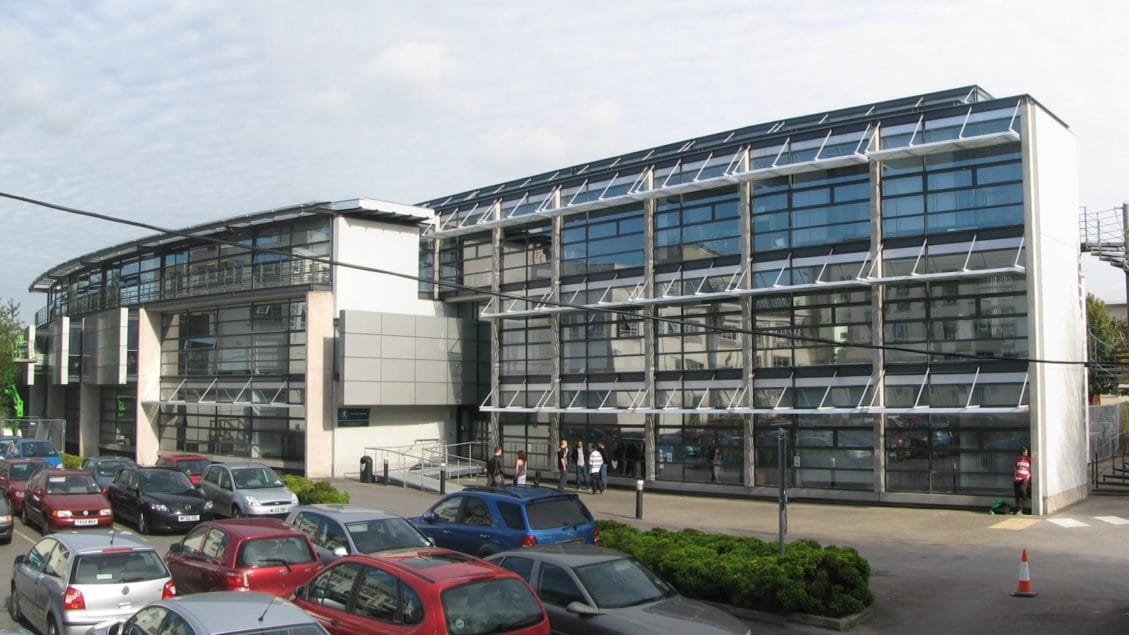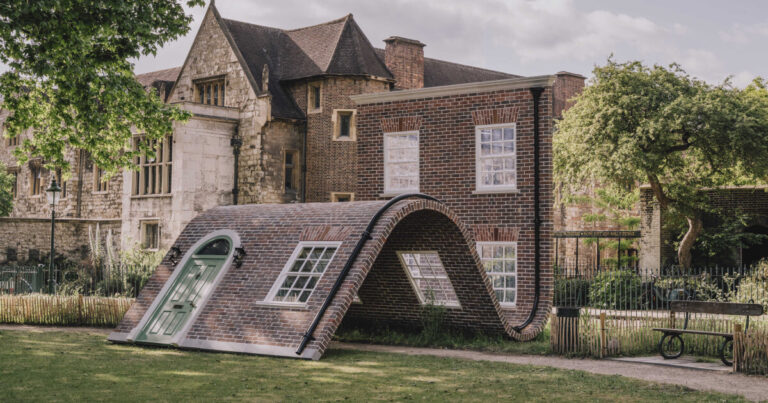The Centenary Building, Winner of First Stirling Prize, to Be Demolished

When it was completed in 1996, the Centenary Building, on the campus of the University of Salford in England, housed the school’s Faculty of Art and Design and was inaugural winner of the Royal Institute of British Architects (RIBA) Stirling Prize. Nearly three decades later, the now-vacant structure has been slated for demolition.
Designed by Hodder Associates (now Hodder + Partners) and built for less than $5 million in under 12 weeks, the Centenary Building marked the merger of University College Salford with the University of Salford and aimed to spur economic investment in the surrounding Adelphi Village. Classrooms and offices were positioned around a linear atrium—an interior “street”—and connected by galleries and bridges. “In this way street life becomes an aspect of the life of the building; common areas and adjoining offices and studios engage with the street to animate the building and imbue it with a sense of purpose,” the Manchester-based firm wrote. The Stirling Prize Jury hailed it as “a dynamic, modern and sophisticated exercise in steel, glass and concrete.” The firm was also praised for eschewing air conditioning in favor of natural ventilation and underfloor heating.
But its aesthetic success collided with functional complaints. Among the biggest were poor climate control—it got too hot in the summer and too cold in the winter— and bad acoustics: the noise of people walking on the building’s metal staircases was amplified by a lack of insulation. As the university, which is in Greater Manchester, reconfigured its campus, the Centenary Building no longer served the institution. The 28-year-old building has sat empty for eight years, despite attempts to keep it functional. (A 2018 effort to retrofit it into a primary school failed.)
In a statement, the university said that the Centenary Building’s “aging infrastructure means it no longer meets modern standards and requirements,” and after “careful consideration” to its history, the institution “intends to demolish the building.”
That consideration has not been careful enough, according to architect Stephen Hodder.
“I think that with concerns about climate change and carbon, we should be going to great lengths to see how we can adapt existing buildings,” he told the BBC. He added that whatever the issues with the building’s heating and cooling, technology has improved to address them with environmental controls. “I guess we have to ask the question as to whether they are sufficiently grave as to warrant demolition? I would venture not.”
The Twentieth Century Society (C20) agrees. In late October, as the university’s plans became clear, the organization, which advocates for the preservation of Britain’s modern design heritage, filed a listing application with Historic England to preserve the Centenary Building. It said its application provides an “intriguing test-case for the heritage status of previous Stirling Prize winners, as the award approaches the 30-year anniversary of its founding.” Named in honor of the late James Stirling, the RIBA Stirling Prize is considered the top honor for individual buildings in the United Kingdom (and across the EU up until 2014). Following Hodder’s win, architects such as Norman Foster, Richard Rogers, Zaha Hadid, and David Chipperfield have all received the prize.
“This is a sophisticated piece of modern architecture, with clear opportunities for adaptive reuse,” C20 told the New York Times about the Centenary Building. “It acted as a catalyst for previous regeneration in the area and could do so again.”
Ironically, the Centenary Building has been earmarked for demolition to clear the way for a redevelopment scheme: Crescent Salford, a $3.2 billion city district created by the Salford city council and the developer English Cities Fund. “The project will…set a new design quality benchmark for the area, helping us to attract new, innovative industries of the future to Salford to collaborate with the research experts at the University,” according to the development’s website.
The Centenary Building was built three decades ago to serve a similar role. Now, the once-lauded structure is seen as an impediment to progress. And the university’s demolition plans bring the structure into the larger debate about preservation and architectural disposability.







